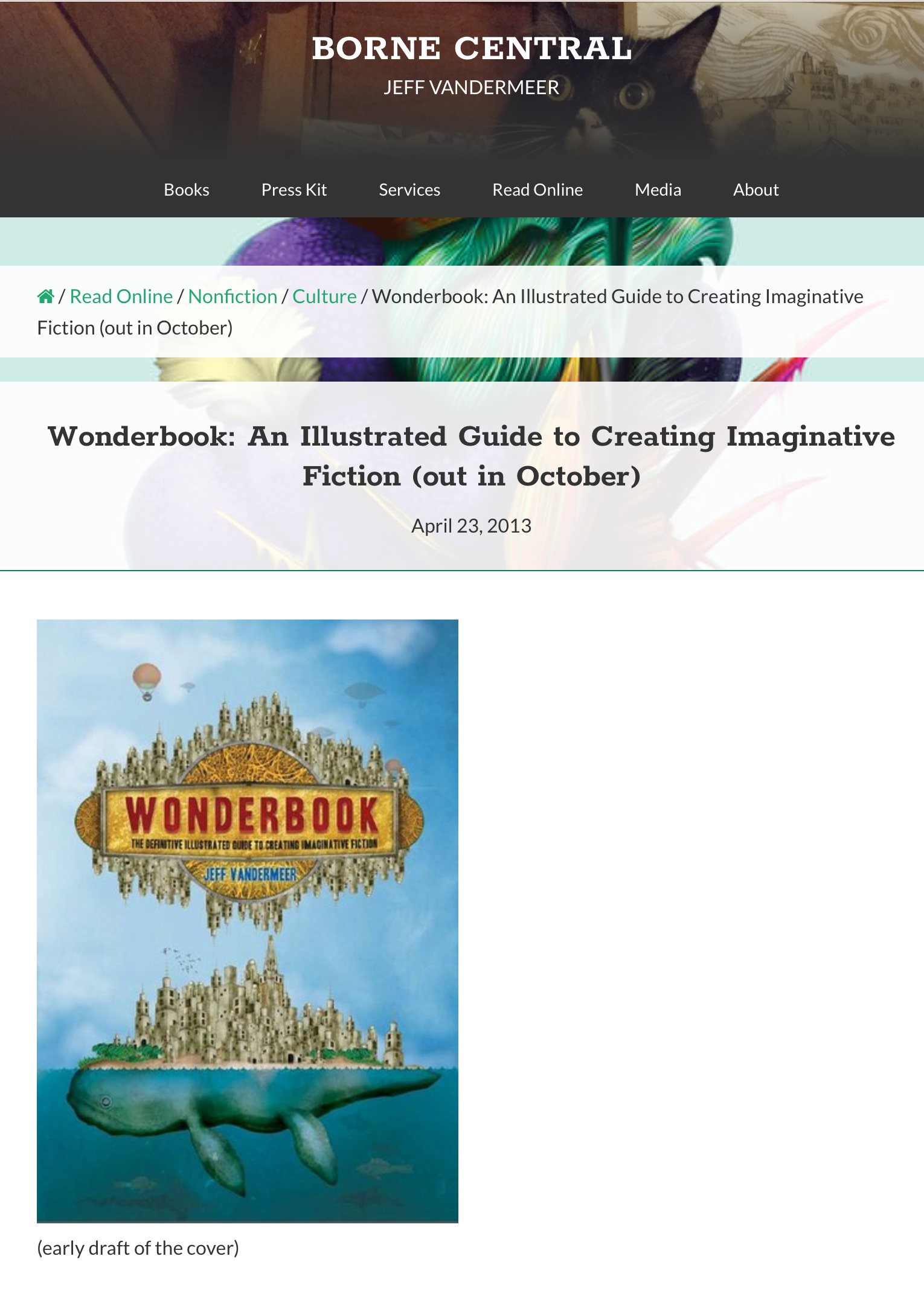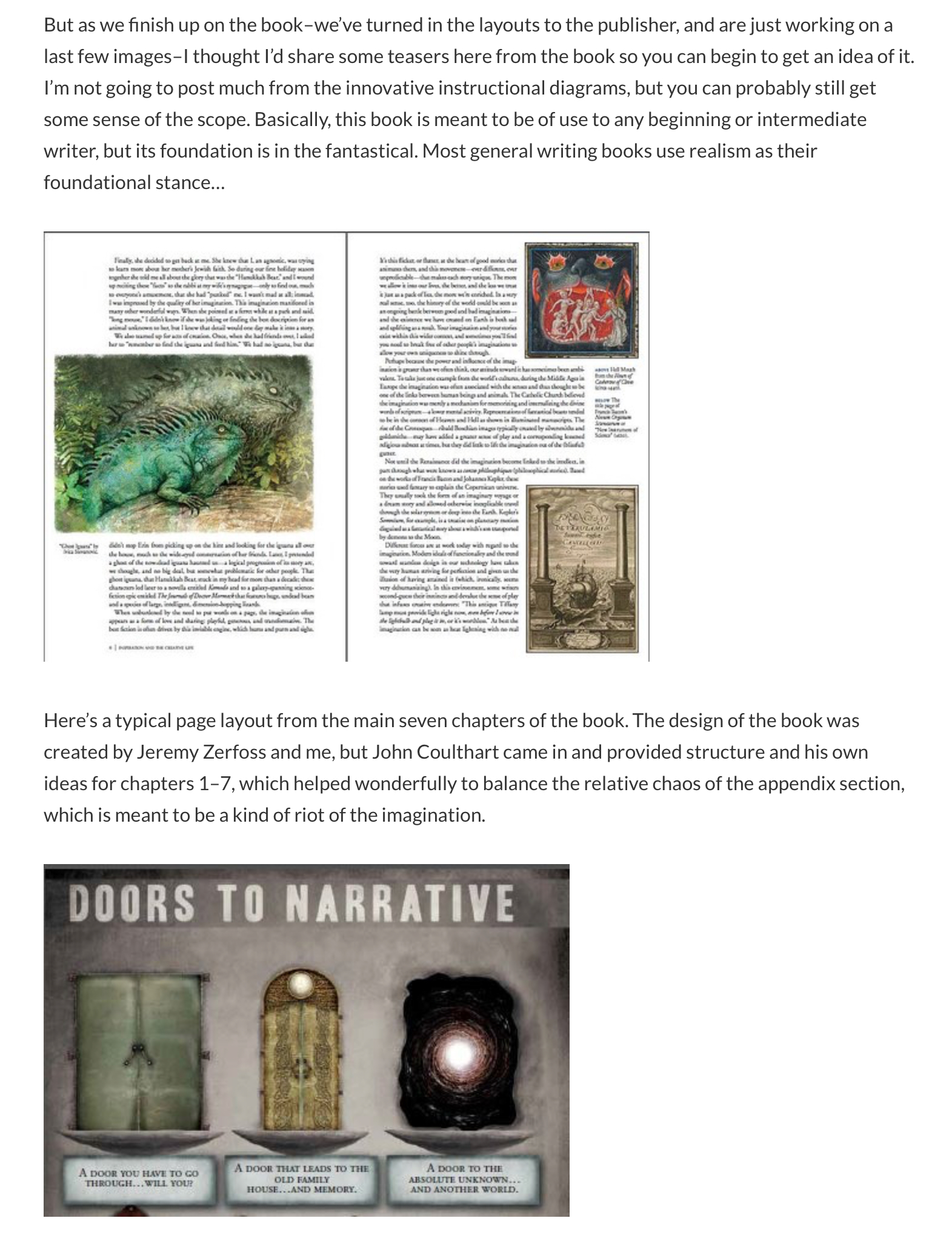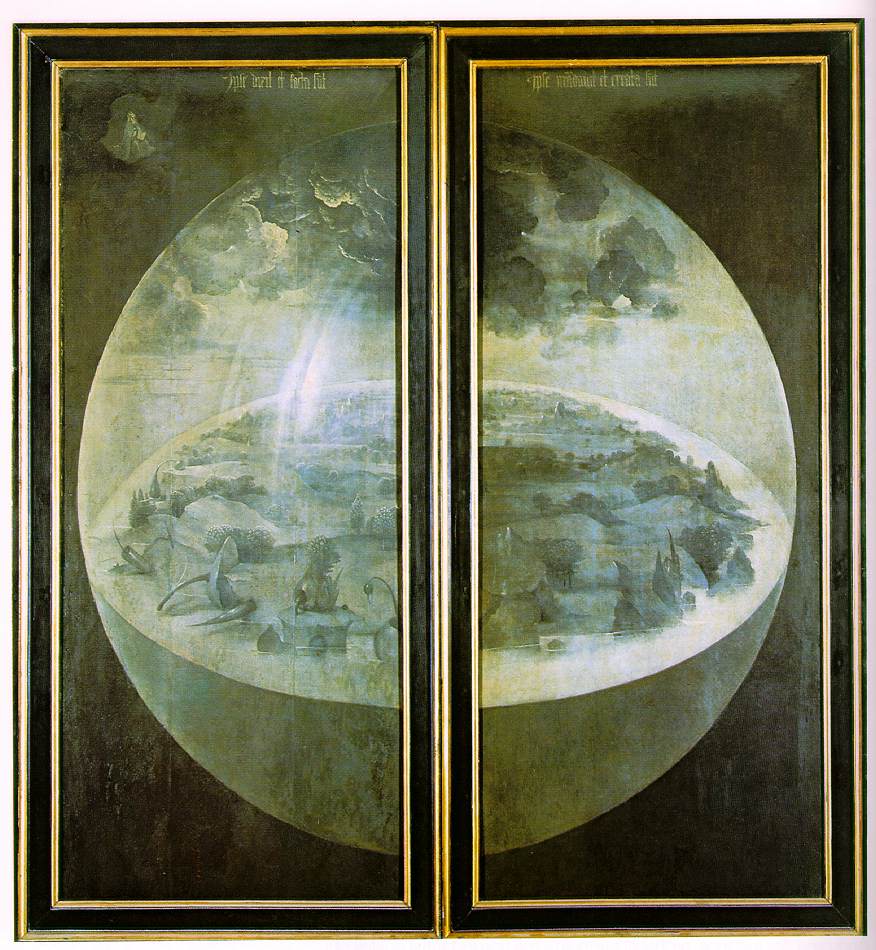
Medievalism, speculative fictions, Rabelais
TUESDAY
- Jeff VanderMeer: the Southern Reach trilogy, Annihilation movie
- “new” worlds and other “other” worlds, under and inside “old” worlds; reading associatively around elements in the Annihilation movie trailer: shimmering veils, lush forests, doorways and other entrances, adventures underground, inscriptions on walls, attacking alien beings and other incomprehensible things, monstrosities, perception of self through awareness that the monstrous other themselves perceive
- the “new weird” and associates: ecotopia, posthumanism, cyberpunk, steampunk, slipstream, Afrofuturism
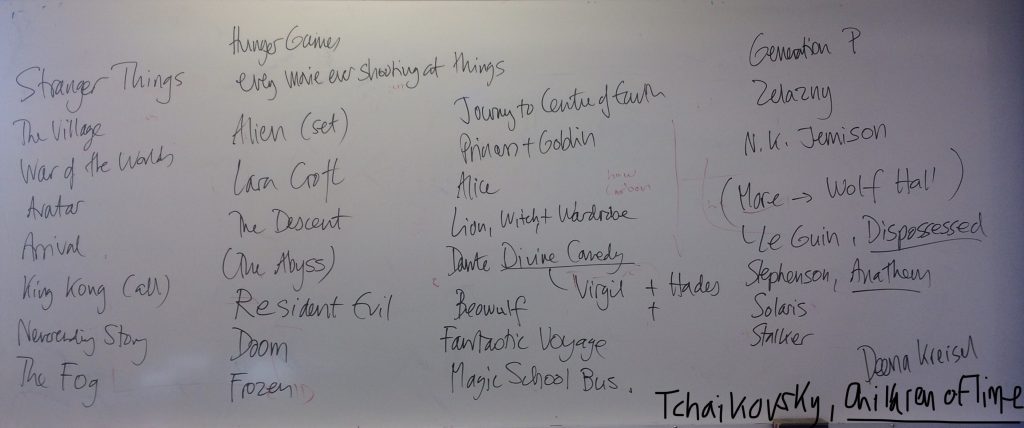
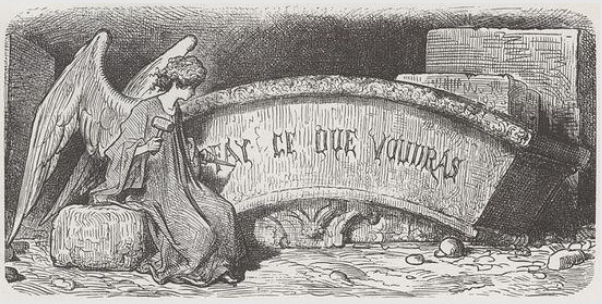
- Gargantua: Thélème
- antecedents: monasteries, courts, gardens, Eden, paradise, libraries, universities, communities; open and closed communities (from anchorites to Béguines and Poor Clares; Christine de Pizan), social experimentation and specifically educational institutions as places of futuristic speculative experiment
- some contemporaries: Thomas More Utopia; its cover and other “other” worlds via the Tower of Babel
- some textual references via week 11 in MDVL301A last year
- Jeff VanderMeer: Wonderbook and creating speculative fiction. Thinking about writing by creative writers about creative writing as another kind of literary criticism and theory (post facto, superficially anachronistic but attempting to find patterns that work generally across common ground) for working with and understanding creative writing of the past through creative reading; which is what we did at the start of class with the “what other films etc does this trailer remind you of?” (at that point in class, no one present had seen the film). Reminding that a purpose of literature, reading, and literary criticism is understanding; not necessarily in one single direction, with one single goal; about finding good questions to ask, not about finding the one right answer; not about finding a solution to a problem, but about the more sophisticated (complicated, living—human or otherwise) idea of resolution. (Analogies often used: round pegs and square holes, nails and hammers.) The two excerpts above are from a 2013 early work in progress post shortly before the book was published (inc. NB medieval elements).
- And an animated short film (we’ll be talking on Thursday about translations across media, and inventing new media, and “translation” broad sense):
THURSDAY
- some more contemporaneity via Hieronymous Bosch
- Reading the “Garden of Earthly Delights,” and reading others’ readings and interpretations and teaching of it, as a useful parallel to reading Rabelais and to thinking about and trying to understand what one does with (and about, and in) utopian communities, education and educational institutions, the life of learning, allegories and allegorisation (IRL and fictions: thinking also about long-running episodic narrative settings, such as TV high school and hospital dramas, the success of Harry Potter in countries where boarding schools have different cultural and social meanings; and thinking about why we read (inc. watch) them)
- Reading the way this painting is accessible, presented, worked with, read (actively / interactively / transactively), and taught; including free open learning online; and translations (broad sense, including rewriting, refashioning, transformation into different media) that continue and keep a work alive (our last example below being an extreme example of bringing a work to life; returning to the start of the course, remembering the creation of life as a first and greatest marvel that is a reference point for all other sorts of marvel and marvellousness)
- Analogy: what could be done next with Rabelais? books and bookishness: manuscript digitisation future visions … and universities, education, learning, life?
- Links:
(1) Wikipedia (static images): closed + open
(2) Three videos, approaches, and ways of interacting with the object: Nicholas Baum, c. 1980; Joseph Leo Koerner, 2009; Pieter van Huystee (trailer for Touched by the Devil), 2016 :
(3) Connected to the last video and the multimedia Bosch events of 2016: interactive Garden of Earthly Delights
The discussion of race here should be supplemented by some further reading and more recent research; for example:
—People of Color in European Art History
—The Public Medievalist Special Series: Race, Racism, and the Middle Ages (40+ articles and a shortlist and poster of key contributions)
—Postmedieval 8: open-access crowd-sourced (partial) bibliography on race and medieval studies
(4) And two last videos, breathing life into a static old two-dimensional object: STUDIO SMACK CGI animation for the State Museum of Breda (Netherlands), 2016 (and more of their work, and an article about this work from designboom); James Spalink, musical arrangement adapted from Amelia Hamrick transcription (on which, and with links to other audio versions see this artnet article), all 2014 (as recirculating online via the Guardian, the Daily Mail (!), and in a nice synthetic post on Open Culture in 2016):
